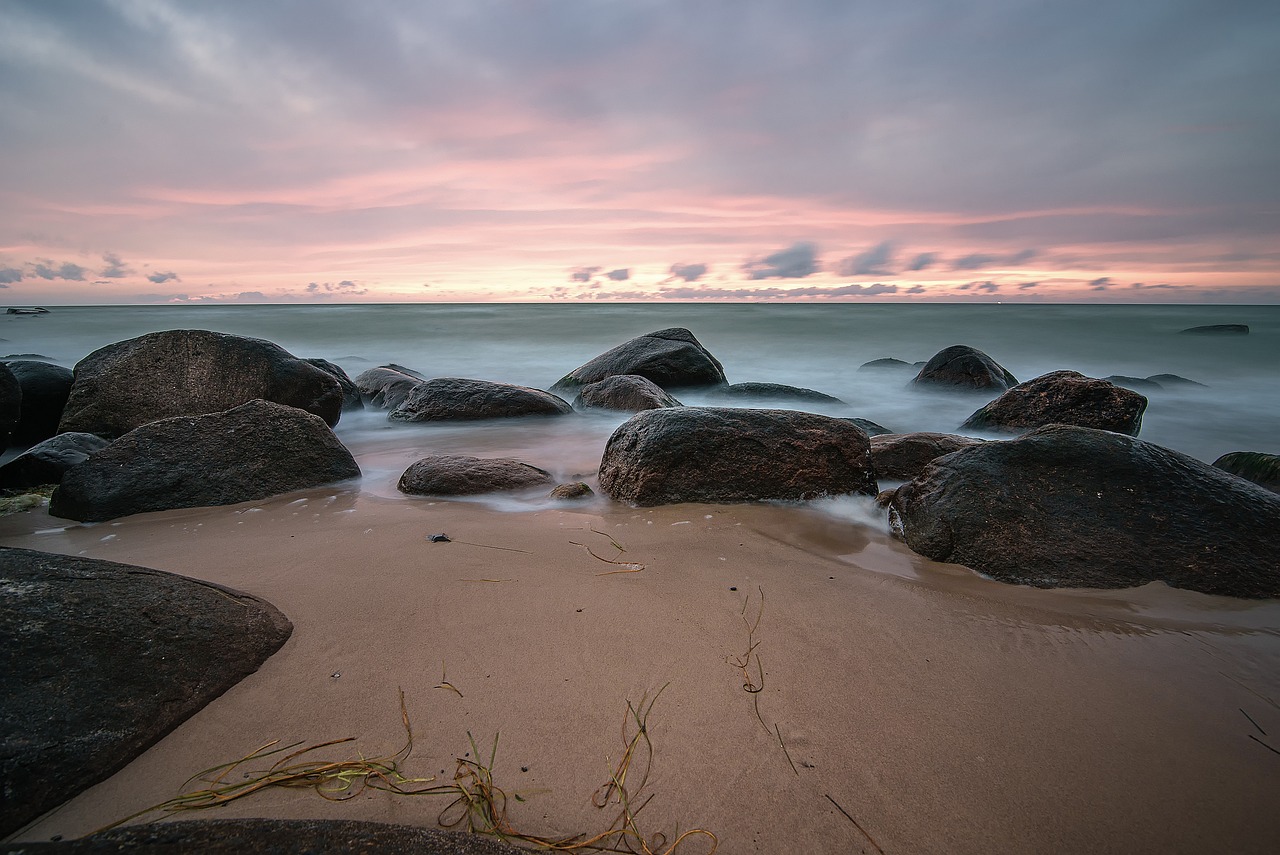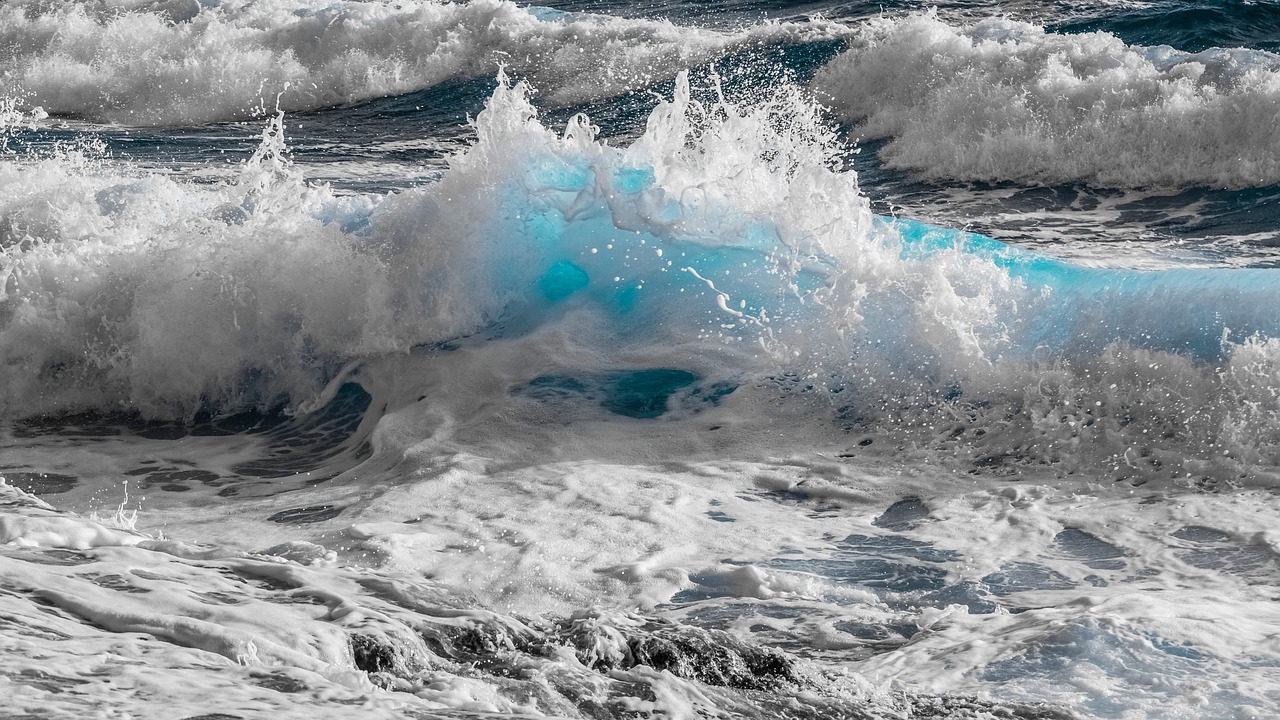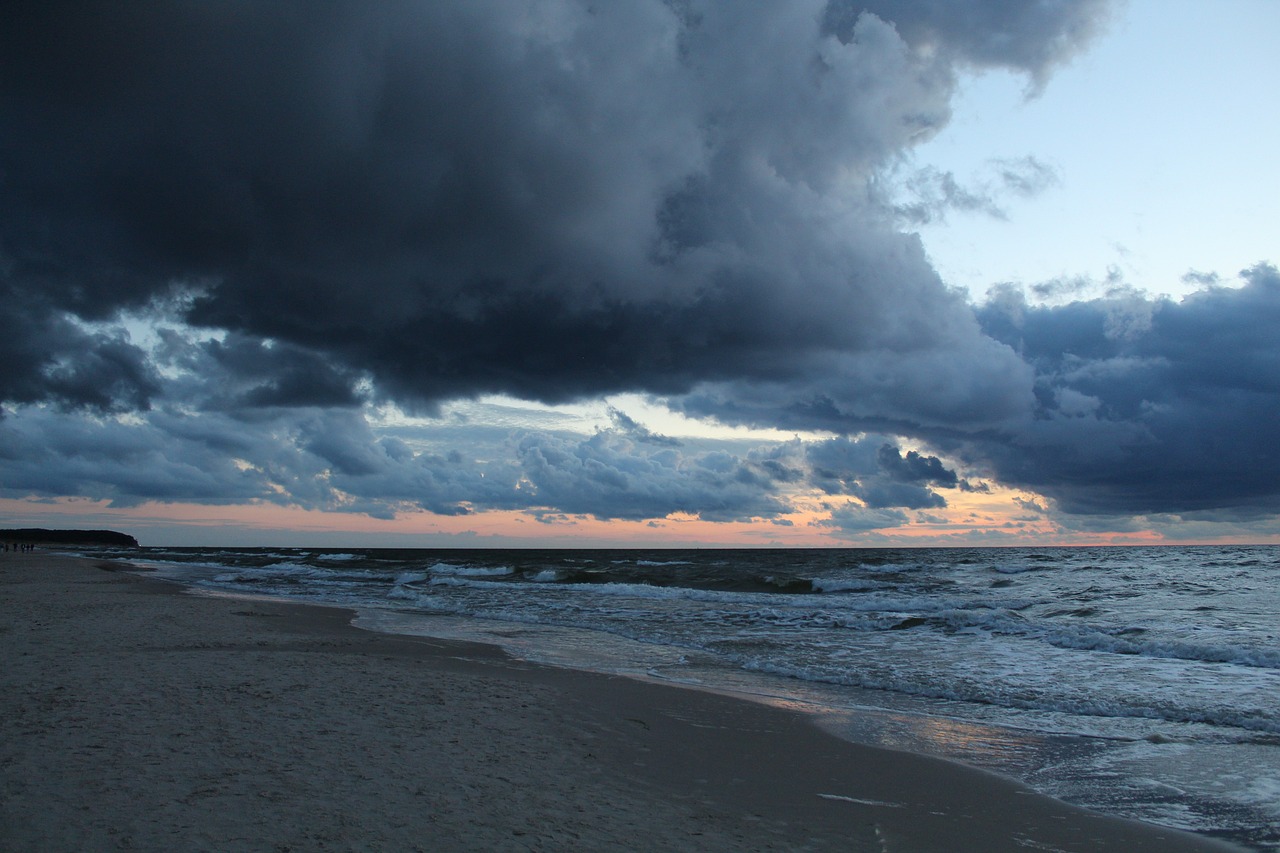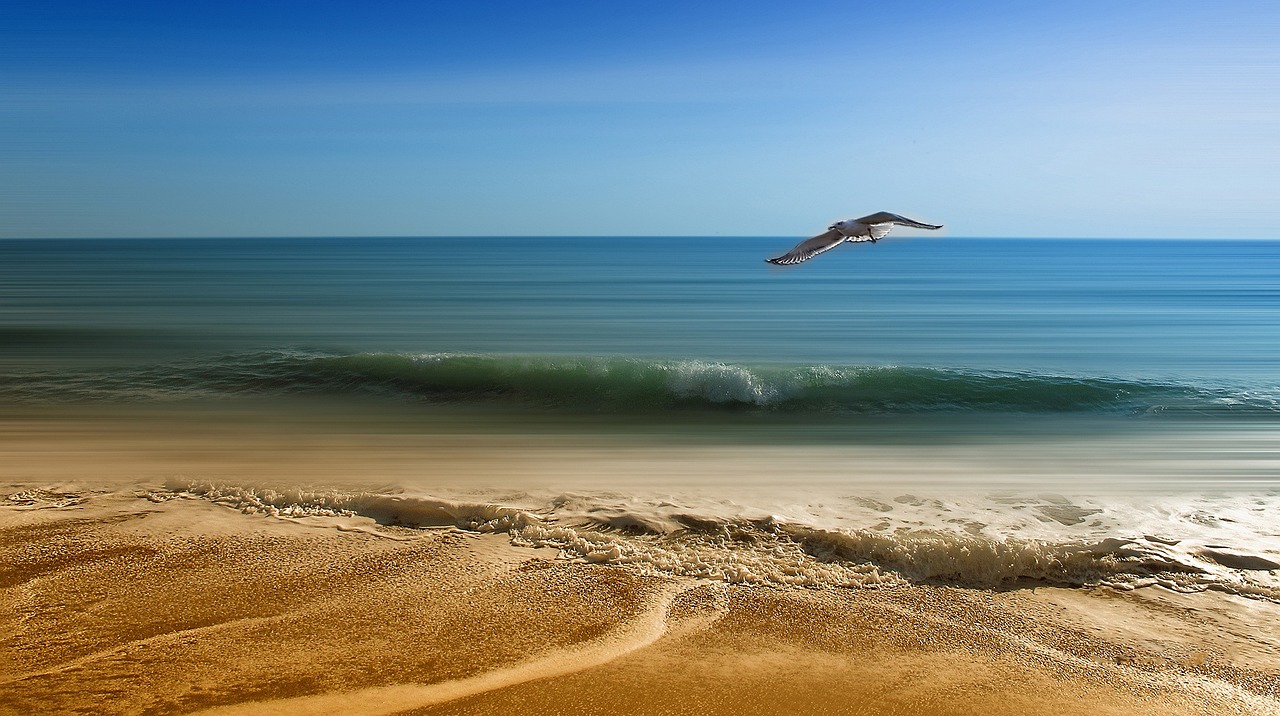How to Make Your Beach Trip More Sustainable?
As the sun casts its golden rays and the waves crash gently on the shore, there's nothing quite like a day at the beach. However, as we bask in the beauty of nature, it's crucial to remember our responsibility toward the environment. Making your beach trip more sustainable is not just a trend; it's a necessity for preserving our oceans and coastlines for future generations. So, how can we enjoy the sun, sand, and surf while minimizing our environmental impact? Here are some practical tips and strategies to ensure that your beach outing is as eco-friendly as possible.
First things first: think about how you’re getting to the beach. Opting for sustainable transportation methods can significantly reduce your carbon footprint. Instead of driving solo, consider carpooling with friends or family. Not only does this cut down on emissions, but it also makes for a more fun and social trip. If feasible, biking to the beach is another fantastic option. It’s a great way to enjoy the scenery and get some exercise at the same time! Public transport is also a viable choice, especially in coastal areas where buses or trains can take you right to the shore.
Next up, let’s talk about what you’re bringing along. Packing items that minimize waste is crucial for sustainability. Instead of single-use plastics, bring reusable containers, utensils, and bags. Think of it this way: by packing these essentials, you're not just reducing waste; you're also setting an example for others. Imagine a beach where everyone is using their own gear instead of tossing plastic wrappers and bottles into the sand. It’s a small change that can lead to a massive impact!
When you're at the beach, remember that you're sharing this beautiful space with local wildlife. Understanding and respecting local species is essential to maintaining the ecosystem. Take a moment to learn about the native animals, plants, and marine life in the area. For instance, if you spot a sea turtle, keep your distance and observe from afar. Interacting responsibly with wildlife not only protects these creatures but also enhances your experience, allowing you to appreciate nature’s wonders without causing harm.
One of the most important principles you can adopt is to practice the Leave No Trace philosophy. This means cleaning up after yourself and ensuring that you leave the beach as beautiful as you found it. Bring along a trash bag for your waste and recycle whenever possible. If you see litter that isn’t yours, pick it up! It’s all about collective responsibility. Remember, every piece of trash you pick up is one less item that could endanger marine life or spoil the beach for others.
While you’re enjoying your beach trip, consider supporting local businesses. This not only boosts the local economy but also promotes sustainable practices within the community. Dine at local eateries that prioritize fresh, locally-sourced ingredients. Purchase handmade crafts or souvenirs from local artisans instead of mass-produced items. By choosing to spend your money locally, you’re helping to create a more sustainable economy that values the environment.
Why not take your commitment to sustainability a step further by participating in beach cleanup initiatives? These events are often organized by local communities and environmental groups and are a fantastic way to contribute positively to the environment. Even if you can’t join a formal event, you can always take the initiative to clean up while you enjoy the beach. Grab a bag, gather some friends, and make it a fun activity. Who knows? You might inspire others to join in!
When it comes to enjoying the sun, protecting your skin is essential, but it’s equally important to protect marine life. Selecting reef-safe sunscreen goes a long way in safeguarding the ocean’s delicate ecosystems. Always check the labels and choose products that are free from harmful chemicals like oxybenzone and octinoxate. By making this small change, you’re helping to ensure that coral reefs and marine creatures remain healthy and vibrant.
As you embark on your beach adventures, take the opportunity to share your knowledge about sustainable practices with friends and family. Whether it’s explaining the importance of reducing plastic use or discussing the impact of pollution on marine life, your voice can inspire others to make eco-friendly choices. Remember, sustainability is a collective effort, and the more people who understand its importance, the better our beaches will be for everyone.
Lastly, consider planning your beach trips during off-peak times. Visiting the beach during weekdays or early mornings can significantly reduce overcrowding and minimize environmental impact. Not only will you enjoy a more peaceful experience, but you’ll also help alleviate the strain on local resources. Think of it as a win-win situation—more space to enjoy, and less pressure on the environment!
- What are the benefits of sustainable beach trips? Sustainable beach trips help preserve natural habitats, reduce pollution, and ensure that future generations can enjoy these beautiful spaces.
- How can I encourage others to be more sustainable at the beach? Share tips and practices, lead by example, and engage in conversations about the importance of protecting our environment.
- Is reef-safe sunscreen really necessary? Yes, using reef-safe sunscreen is crucial for protecting marine life from harmful chemicals that can damage coral reefs.

Choose Eco-Friendly Transportation
When planning your beach getaway, one of the most impactful choices you can make is how you get there. Opting for eco-friendly transportation not only helps to reduce your carbon footprint but also sets a positive example for others around you. Imagine the difference it could make if everyone decided to leave their cars behind and choose greener alternatives! Instead of jumping into your vehicle alone, consider carpooling with friends or family. Not only does this cut down on emissions, but it also turns the journey into a fun road trip filled with laughter and shared playlists.
If carpooling isn’t an option, why not hop on a bike? Cycling to the beach is not only a fantastic way to enjoy the scenery, but it also gets your heart pumping and your spirits high. Picture yourself pedaling along coastal paths, the wind in your hair, and the sun shining down. It’s a refreshing way to start your beach day! Additionally, many coastal areas offer bike rental services, making it easy for everyone to join in on the fun without the need for a personal vehicle.
Another great option is to utilize public transportation. Many beach destinations are well-connected by buses or trains, which can significantly cut down on individual car trips. Plus, public transport allows you to relax and take in the sights without the stress of driving and parking. Just think about it: while you’re on a bus, you can chat with fellow travelers, read a book, or even enjoy a snack—definitely a more leisurely way to start your beach adventure!
To make your trip even more sustainable, consider the following eco-friendly transportation options:
- Carpooling: Share the ride with friends or family.
- Biking: Enjoy the scenery while getting some exercise.
- Public Transport: Use buses or trains to reduce individual emissions.
- Walking: If you're close enough, nothing beats the simplicity of walking to the beach.
Incorporating these methods into your travel plans not only benefits the environment but can also enhance your overall beach experience. You might discover hidden gems along the way or make new friends during your journey. Remember, every small step counts, and your choice of transportation can inspire others to follow suit. So, the next time you’re gearing up for a day of sun and surf, think about how you can make your trip more sustainable right from the start!

Pack Zero-Waste Essentials
When it comes to enjoying a day at the beach, packing smart can make all the difference, especially if you're aiming for a sustainable experience. The idea of going zero-waste might sound daunting, but it’s all about making conscious choices that reduce your environmental impact. Imagine a beach day where you can relax without the nagging guilt of contributing to plastic pollution! By packing the right essentials, you can enjoy the sun, sand, and surf while keeping Mother Nature happy.
First off, let’s talk about reusable containers. Instead of tossing your snacks into single-use plastic bags, opt for sturdy, reusable containers. Not only do these keep your food fresh, but they also cut down on waste. You can pack a delicious picnic with fruits, sandwiches, and even some homemade treats without the fear of contributing to the plastic pileup that often plagues our beautiful beaches.
Next, consider bringing your own utensils. It’s easy to grab disposable forks and spoons when you’re on the go, but they add up quickly in landfills. Instead, pack a set of travel utensils made from bamboo or stainless steel. They’re lightweight, easy to clean, and can be used over and over again. Plus, you’ll look pretty cool whipping out your stylish utensils while others are fumbling with their plastic ones!
And let’s not forget about beach towels. Instead of using those cheap, disposable towels that often end up in the trash, invest in a high-quality, reusable beach towel. Look for ones made from sustainable materials that dry quickly and are easy to carry. You can also consider bringing a beach blanket that’s made from recycled materials. This not only gives you a cozy spot to relax but also promotes the idea of sustainability.
Another essential to consider is a reusable water bottle. Staying hydrated is crucial under the sun, and what better way to do it than with a stylish, insulated water bottle? This helps you avoid buying bottled water, which contributes to plastic waste. Many beaches now have refill stations, so you can easily fill up your bottle throughout the day. Plus, there’s something refreshing about sipping cold water from a bottle you brought from home!
For those who love their beverages, think about packing a reusable cup or a thermos. Whether it’s coffee, iced tea, or a refreshing smoothie, having your own cup means you won’t need to rely on disposable cups. This small change can make a big difference in reducing waste. You might even inspire others to make the switch!
Lastly, don’t forget a reusable bag for your beach essentials. Whether it’s for carrying your gear, snacks, or even the treasures you find along the shore, a sturdy bag can replace countless plastic bags that often end up littering our beaches. Choose one made from organic cotton or recycled materials to further enhance your eco-friendly approach.
In summary, packing zero-waste essentials is not only easy but also incredibly rewarding. You’ll feel great knowing you’re making a positive impact while enjoying your day by the ocean. So, next time you plan a beach trip, think about these items and how they can help you maintain a sustainable lifestyle. Remember, every little effort counts, and together, we can keep our beaches beautiful for generations to come!

Respect Local Wildlife
When you're soaking up the sun and enjoying the waves, it’s easy to forget that the beach is home to a rich tapestry of local wildlife. From the tiniest sand crabs scuttling along the shore to majestic sea turtles gliding through the water, each creature plays a vital role in the ecosystem. So, how can you ensure that your beach visit is not just enjoyable but also respectful to these incredible inhabitants? First and foremost, it’s essential to educate yourself about the native species that reside in the area. Understanding their behaviors and habitats can significantly enhance your experience and help you interact with them responsibly.
For instance, did you know that many sea turtles return to the same beaches year after year to nest? If you happen to spot one, it’s crucial to keep your distance and avoid disturbing them. Approaching wildlife too closely can cause stress and disrupt their natural behaviors. Instead, consider using binoculars or a camera with a zoom lens to observe these magnificent creatures from afar. Additionally, be aware of any local regulations regarding wildlife interactions; many beaches have guidelines in place to protect vulnerable species. Following these rules not only helps the animals but also promotes a culture of respect among beachgoers.
Another important aspect of respecting local wildlife is being mindful of your surroundings. When walking along the beach, try to stick to designated paths to avoid trampling on nests or habitats. For example, the nests of shorebirds are often camouflaged within the sand, making them easy to overlook. If you see signs indicating nesting areas, take a moment to appreciate their significance and give them the space they need to thrive. Remember, your footprints can have a lasting impact, so tread lightly and leave no trace behind.
Furthermore, it’s essential to recognize the impact of litter on marine life. Plastic waste, in particular, poses a severe threat to wildlife. Sea creatures often mistake plastic for food, leading to ingestion and, in many cases, fatal consequences. To combat this issue, always carry a reusable bag to collect any trash you may encounter during your visit. Not only will you be helping the environment, but you’ll also set an example for others, fostering a community that values and protects local wildlife.
In conclusion, respecting local wildlife during your beach trip is not just a good practice; it's a responsibility we all share. By educating ourselves, adhering to guidelines, and minimizing our environmental impact, we can ensure that future generations will also have the opportunity to enjoy the beauty of our oceans and the creatures that inhabit them. So, the next time you hit the beach, take a moment to appreciate the wildlife around you and commit to being a steward of the environment.
- Why is it important to respect local wildlife at the beach?
Respecting local wildlife helps maintain the delicate balance of the ecosystem and ensures the survival of various species. - What should I do if I encounter a nesting sea turtle?
Keep your distance, avoid flash photography, and report the sighting to local wildlife authorities if necessary. - How can I help reduce plastic pollution at the beach?
Always carry reusable bags, participate in beach cleanups, and avoid single-use plastics. - Are there specific rules for interacting with wildlife at the beach?
Yes, many beaches have guidelines in place to protect wildlife, so be sure to familiarize yourself with them before your visit.

Leave No Trace
This article explores practical tips and strategies to minimize your environmental impact while enjoying the beach, ensuring a more sustainable and eco-friendly experience for all beachgoers.
Opting for sustainable transportation methods can significantly reduce your carbon footprint. Consider carpooling, biking, or using public transport to reach your beach destination.
Packing items that minimize waste is crucial for sustainability. Bring reusable containers, utensils, and bags to avoid single-use plastics during your beach outing.
Understanding and respecting local wildlife is essential to maintaining the ecosystem. Learn about the native species and how to interact with them responsibly while at the beach.
Practicing the principle is not just a suggestion; it’s a commitment to preserving the beauty of our beaches for future generations. Imagine walking along the shore, feeling the warm sand between your toes, only to stumble upon litter left behind by previous visitors. It's disheartening, isn't it? To truly enjoy the beach, we must take responsibility for our actions and ensure that we leave it as pristine as we found it.
To achieve this, start by cleaning up after yourself. Bring along a dedicated bag for trash and recyclables, and make it a habit to pick up any litter you see, even if it’s not yours. This simple act can make a huge difference. You might be surprised to find how much trash accumulates in just a short time, so keeping an eye out can help maintain the beach's natural beauty.
Moreover, proper waste disposal is key. Familiarize yourself with the recycling options available at the beach. Many coastal areas have specific guidelines for disposing of waste, and adhering to these can help minimize your impact. If you’re unsure about what can be recycled, it’s better to err on the side of caution and take it home with you.
Additionally, consider the environmental impact of your beach gear. Instead of single-use items, opt for durable, reusable alternatives. For example, use a stainless steel water bottle instead of plastic ones. This not only reduces waste but also keeps your drink cool and refreshing!
In essence, adopting the Leave No Trace principles can transform your beach experience into a more fulfilling and responsible adventure. By being mindful of your impact, you contribute to a cleaner, healthier environment for everyone to enjoy.
Choosing to support local businesses helps promote sustainable practices within the community. Consider dining at local eateries and purchasing from local artisans during your beach trip.
Joining beach cleanup initiatives is a great way to contribute positively to the environment. Participate in organized events or take the initiative to clean up while you enjoy the beach.
Selecting reef-safe sunscreen protects marine life from harmful chemicals. Always check labels and choose products that are free from oxybenzone and octinoxate.
Sharing knowledge about sustainable practices can inspire others to make eco-friendly choices. Use your beach trip as an opportunity to educate friends and family on the importance of sustainability.
Visiting the beach during off-peak times helps reduce overcrowding and minimizes the environmental impact. Consider planning your trip during weekdays or early mornings for a more sustainable experience.
Q: What does "Leave No Trace" mean?
A: "Leave No Trace" refers to a set of principles aimed at minimizing human impact on the environment. It encourages practices like cleaning up after yourself and respecting wildlife.
Q: How can I participate in beach cleanups?
A: You can join local organizations that host beach cleanups or organize your own cleanup day with friends and family. Check social media or community boards for upcoming events.
Q: What should I do if I find wildlife on the beach?
A: Observe from a distance and do not disturb them. Research local wildlife to understand how to interact responsibly.
Q: Why is reef-safe sunscreen important?
A: Reef-safe sunscreen protects marine ecosystems from harmful chemicals that can damage coral reefs and marine life.

Support Local Businesses
When you're soaking up the sun and enjoying the waves, it’s easy to overlook the impact of your choices on the local community. However, supporting local businesses is one of the most effective ways to contribute to a sustainable beach experience. Think about it: when you choose to eat at a local diner instead of a big chain restaurant, or purchase handmade souvenirs from a nearby artisan, you're not just enjoying unique offerings; you're also investing in the local economy and helping to preserve the culture of the area.
Local businesses often prioritize sustainability, utilizing fresh, local ingredients and eco-friendly practices. For example, many beachside cafes source their seafood from local fishermen, ensuring that you're not only getting a delicious meal but also supporting sustainable fishing practices. Plus, these establishments tend to have a smaller carbon footprint compared to larger corporations, which often rely on mass production and shipping.
Moreover, by opting for local shops and services, you're helping to create jobs in the community, which can lead to a more vibrant and resilient local economy. It’s a win-win situation! You get to enjoy authentic experiences while ensuring that the community thrives. When you buy from local artisans, you’re also encouraging the preservation of traditional crafts and skills that might otherwise fade away.
So, how can you effectively support local businesses during your beach trip? Here are some quick tips:
- Research local restaurants and cafes before your trip. Look for places that have good reviews and a commitment to sustainability.
- Visit local markets for fresh produce, snacks, and unique souvenirs. Not only will you find something special, but you’ll also be supporting local farmers and artisans.
- Engage with local tour guides. They often have a wealth of knowledge about the area and can provide a more personalized experience.
In conclusion, every dollar you spend at a local business is a vote for the kind of community you want to see. By making conscious choices, you can enjoy your beach trip while ensuring that the local economy flourishes and the environment remains protected. So next time you plan your beach getaway, remember: your support can make a significant difference!
Q: Why is it important to support local businesses while at the beach?
A: Supporting local businesses helps to strengthen the local economy, promotes sustainable practices, and preserves the unique culture of the area.
Q: How can I find local businesses to support during my beach trip?
A: You can research online, ask locals for recommendations, or use apps that highlight local businesses in your vacation area.
Q: What are some examples of local businesses I can support?
A: Look for local restaurants, shops, markets, and tour guides. These businesses often offer unique products and experiences that reflect the local culture.
Q: How does supporting local businesses impact the environment?
A: Local businesses typically have a smaller carbon footprint and are more likely to use sustainable practices, which helps to protect the environment.

Participate in Beach Cleanups
Participating in beach cleanups is not just a noble activity; it's a powerful way to make a positive impact on the environment while enjoying the sun and surf. Imagine walking along the shore, the salty breeze in your hair, and realizing that you have the opportunity to transform a littered beach into a pristine paradise. Beach cleanups allow you to connect with nature, meet like-minded individuals, and contribute to the health of marine ecosystems. Plus, it’s a fantastic way to spend time outdoors, soaking up the sun while doing something meaningful.
Many beaches regularly organize cleanup events, often in collaboration with local environmental groups. These events can be a great way to get involved, but you don’t have to wait for an organized effort to make a difference. Even if you’re just enjoying a day at the beach, you can bring a reusable bag and collect any trash you find along the way. Every piece of litter you pick up is a step towards a cleaner ocean and a healthier environment.
Before you head out, consider the following tips to maximize your contribution:
- Bring Your Own Supplies: While many organized cleanups provide gloves and bags, it's a good idea to bring your own reusable supplies. This reduces waste and ensures you have what you need.
- Know What to Collect: Focus on items that are harmful to marine life, such as plastics, cigarette butts, and glass. These materials can cause serious damage to wildlife and ecosystems.
- Document Your Efforts: Take photos of the cleanup process and share them on social media. This can raise awareness about the importance of keeping our beaches clean and inspire others to join the cause.
Not only do beach cleanups help maintain the beauty of our coastlines, but they also serve as a reminder of the impact we have on our environment. By participating, you're not just cleaning up; you're also educating yourself and others about the importance of sustainability. You might find that your passion for protecting the environment grows, leading you to explore more eco-friendly practices in your daily life.
As you engage in these activities, you may also want to encourage friends and family to join you. After all, the more hands on deck, the more litter can be collected! Organizing a group cleanup can turn a simple beach day into a fun and fulfilling community event. So, grab your friends, pack some snacks, and head to the beach with a mission. Remember, every little bit helps, and together, we can create a wave of change for our oceans!
Q: Do I need to sign up for a beach cleanup?
A: It depends on the event. Some organized cleanups require registration, while others are open to anyone. Check with local environmental groups for details.
Q: What should I wear for a beach cleanup?
A: Wear comfortable clothes that you don’t mind getting dirty, along with sturdy shoes. Sunscreen and a hat are also recommended to protect against sun exposure.
Q: Can I bring my children to a beach cleanup?
A: Absolutely! Beach cleanups can be a great family activity. Just ensure they understand what items to collect and supervise them closely.
Q: What should I do with the trash I collect?
A: Many cleanups provide designated disposal areas. If you’re cleaning up independently, make sure to take the trash home and dispose of it properly.

Use Reef-Safe Sunscreen
When you're gearing up for a fun day at the beach, it’s easy to forget that the products we use can have a significant impact on the environment. One of the most important items to consider is your sunscreen. Traditional sunscreens often contain harmful chemicals like oxybenzone and octinoxate, which can damage coral reefs and marine life. This is where reef-safe sunscreen comes into play. By choosing a sunscreen that is free from these harmful ingredients, you’re not just protecting your skin from harmful UV rays, but also playing a crucial role in preserving our precious marine ecosystems.
So, what exactly makes a sunscreen 'reef-safe'? It’s all about the ingredients. Look for products that use natural minerals like zinc oxide or titanium dioxide as their active components. These minerals sit on top of the skin and physically block harmful rays without leaching into the water. It’s like having a shield that protects you and the ocean at the same time! Plus, many reef-safe sunscreens are made with organic ingredients and are free from parabens and synthetic fragrances, making them a better choice for your skin as well.
Here are some tips to help you choose the right reef-safe sunscreen:
- Check the Label: Always read the ingredients list. Avoid products with oxybenzone, octinoxate, and other harmful chemicals.
- Go for Broad Spectrum: Ensure your sunscreen protects against both UVA and UVB rays.
- Opt for Water-Resistant Options: If you plan to swim, look for water-resistant formulas that stay effective for longer.
Using reef-safe sunscreen is just one small step in making your beach trip more sustainable. It’s a simple change that can lead to significant positive impacts on marine life. By being mindful of what you apply to your skin, you’re also raising awareness about the importance of protecting our oceans. So, the next time you pack for the beach, make sure you include a reef-safe sunscreen in your bag. Your skin—and the sea creatures—will thank you!
1. What is the difference between reef-safe and regular sunscreen?
Reef-safe sunscreen is formulated without harmful chemicals that can damage coral reefs and marine ecosystems. Regular sunscreen often contains ingredients like oxybenzone and octinoxate, which are known to be harmful to marine life.
2. How can I tell if a sunscreen is reef-safe?
Look for sunscreens that list mineral-based active ingredients such as zinc oxide or titanium dioxide. Additionally, check for labels that specifically state "reef-safe" or "ocean-friendly."
3. Is reef-safe sunscreen effective?
Yes! Reef-safe sunscreens that contain zinc oxide or titanium dioxide provide effective broad-spectrum protection against UVA and UVB rays, just like traditional sunscreens.
4. Are there any other benefits to using reef-safe sunscreen?
Many reef-safe sunscreens are made with natural ingredients that are less likely to irritate the skin. They often avoid synthetic fragrances and parabens, making them a gentler choice for your skin.

Educate Others
When it comes to sustainability, one of the most powerful tools we have is education. Sharing knowledge about eco-friendly practices can create a ripple effect, inspiring others to adopt similar habits. Imagine you’re at the beach, soaking in the sun and enjoying the waves, when you notice a friend reaching for a plastic straw. Instead of just letting it slide, why not take a moment to explain why that choice might not be the best for our oceans? You could say something like, "Hey, did you know that plastic straws are among the top items found during beach cleanups? Let’s use these reusable ones instead!"
Not only does this approach help your friend make a more informed decision, but it also opens the door for a conversation about broader sustainability practices. You might discuss how single-use plastics contribute to ocean pollution or the importance of choosing reef-safe sunscreen. You could even share a few facts, like how marine life can mistake plastic for food, leading to dire consequences for their health and our ecosystem.
Another great way to educate others is to utilize social media. Share your beach experiences and highlight your sustainable choices. Post photos of your reusable gear, or create a short video showing how to properly dispose of waste. Use hashtags like #SustainableBeachTrip or #LeaveNoTrace to reach a wider audience. This not only spreads awareness but also encourages your followers to think critically about their own habits.
Moreover, consider organizing a small workshop or discussion group at your local community center or even at the beach itself. Gather like-minded individuals and discuss the importance of sustainability, share tips, and brainstorm ways to make a positive impact. You could even create a fun quiz to test everyone’s knowledge on marine life and environmental protection. This interactive approach can make learning about sustainability engaging and memorable.
Lastly, don’t underestimate the power of leading by example. When others see you actively practicing sustainability—whether it’s using a reusable water bottle, participating in beach cleanups, or supporting local businesses—they’re more likely to follow suit. Your actions can speak volumes, and sometimes, just being the change you wish to see is the most effective way to educate others.
| Question | Answer |
|---|---|
| How can I start educating others about sustainability? | Begin by sharing your experiences and knowledge with friends and family. Use social media to spread awareness and consider organizing community events. |
| What are some effective ways to engage people in discussions about sustainability? | Use relatable examples, share impactful statistics, and encourage participation through interactive activities like quizzes or workshops. |
| Can small actions really make a difference? | Absolutely! Small changes, when adopted by many, can lead to significant positive impacts on the environment. |

Plan Off-Peak Visits
When it comes to enjoying a day at the beach, timing can make all the difference. Planning your visit during off-peak hours not only enhances your experience but also contributes to a more sustainable environment. Imagine walking along the shore, feeling the soft sand beneath your feet, and hearing the gentle waves lapping against the beach—without the hustle and bustle of crowds. This serene atmosphere is not just a dream; it can be your reality if you choose to visit during less crowded times.
So, when are these magical off-peak times? Typically, weekdays are your best bet. Many beachgoers flock to the shore during weekends, especially in the summer months. By opting for a mid-week escape, you’ll find fewer people, allowing you to fully immerse yourself in nature's beauty. Early mornings or late afternoons can also be ideal. Think about it: the sun rising over the water or setting in a blaze of color is a sight that many miss because they’re still in bed or caught in traffic.
Visiting during off-peak hours has several benefits:
- Reduced Environmental Impact: Fewer visitors mean less waste, less noise, and a lower carbon footprint. You can enjoy the beach while knowing you’re doing your part to protect the environment.
- Enhanced Wildlife Experience: Many local species are more active during quieter times. You might spot dolphins playing in the waves or sea turtles nesting on the shore when there are fewer people around.
- More Space to Relax: With fewer people, you’ll have more room to spread out your towel, enjoy a picnic, or simply soak up the sun without feeling cramped.
Additionally, consider checking local calendars for events or festivals that might draw larger crowds. By avoiding these dates, you can sidestep the chaos and enjoy a more peaceful beach experience. And let’s not forget about the local businesses! Visiting during off-peak times can also help them thrive without overwhelming them during peak hours.
In conclusion, planning your beach trip during off-peak hours is a simple yet effective way to enhance your experience while promoting sustainability. So, next time you think about hitting the beach, why not set that alarm a little earlier or plan a spontaneous mid-week getaway? Your future self—and the environment—will thank you!
1. What are off-peak hours for beach visits?
Off-peak hours typically refer to times when fewer people visit the beach. This often includes weekdays and early mornings or late afternoons, especially during the summer months.
2. How does visiting during off-peak times help the environment?
Fewer visitors lead to less waste, reduced noise pollution, and a smaller carbon footprint, all of which contribute to a healthier beach ecosystem.
3. Can I still enjoy beach activities during off-peak hours?
Absolutely! Off-peak times can provide a more enjoyable experience for activities like swimming, sunbathing, and beach games, without the crowds.
4. Are there any downsides to visiting during off-peak times?
While there may be fewer amenities available (like lifeguards or beach rentals), the benefits of a peaceful, less crowded beach often outweigh any minor inconveniences.
Frequently Asked Questions
- What are some eco-friendly transportation options for getting to the beach?
Choosing eco-friendly transportation can make a big difference! Consider carpooling with friends, biking if you live nearby, or using public transport. Not only does this help reduce your carbon footprint, but it also makes the journey more fun and social!
- How can I pack zero-waste essentials for my beach trip?
Packing zero-waste essentials is easier than you think! Bring along reusable containers for snacks, stainless steel utensils, and cloth bags for your beach gear. This way, you can avoid single-use plastics and enjoy your day without leaving a trace!
- Why is it important to respect local wildlife at the beach?
Respecting local wildlife is crucial for maintaining the delicate ecosystem. By learning about native species and how to interact with them responsibly, you help protect their habitats and ensure that future beachgoers can enjoy nature just like you did!
- What does "Leave No Trace" mean when visiting the beach?
The "Leave No Trace" principle is all about cleaning up after yourself. It means picking up your trash, recycling when possible, and leaving the beach just as beautiful as you found it. This simple act can have a huge impact on the environment!
- How can supporting local businesses contribute to sustainability?
Supporting local businesses helps promote sustainable practices within the community. When you dine at local eateries or buy from local artisans, you’re not only enjoying unique offerings but also boosting the local economy and encouraging eco-friendly practices!
- What are the benefits of participating in beach cleanups?
Participating in beach cleanups is a fantastic way to give back to the environment. Not only do you help remove trash and debris, but you also inspire others to join in and take action. Plus, it’s a great way to meet like-minded people who care about the planet!
- Why should I use reef-safe sunscreen?
Using reef-safe sunscreen is vital for protecting marine life. Many conventional sunscreens contain harmful chemicals that can damage coral reefs and aquatic ecosystems. Always check labels for ingredients like oxybenzone and octinoxate to keep the ocean safe!
- How can I educate others about sustainable beach practices?
Educating others about sustainable practices can be incredibly rewarding! Use your beach trip as an opportunity to share tips with friends and family. Whether it’s talking about zero-waste packing or the importance of local wildlife, your passion can inspire change!
- When is the best time to visit the beach for a sustainable experience?
Planning your beach visit during off-peak times can greatly reduce overcrowding and its environmental impact. Consider going on weekdays or early in the morning for a more serene experience. Plus, you’ll enjoy more space to relax and appreciate nature!



















